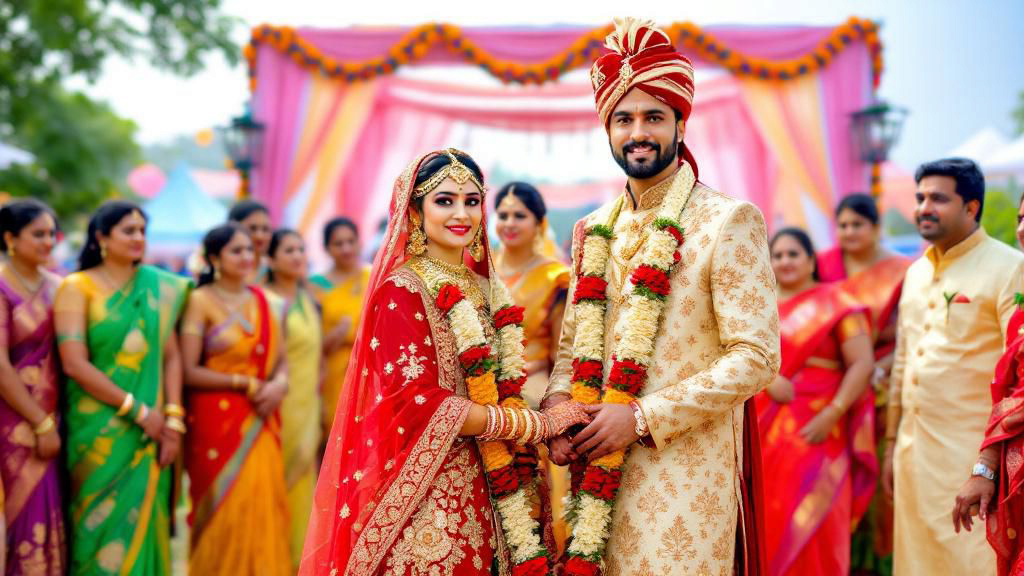The vibrant colors, joyous celebrations, rich traditions, and elaborate feasts—there is nothing quite like a traditional Indian wedding. It's a spectacular union of two families, often spanning several days of festivities. But behind the grandeur lies a question every family grapples with: what is all of this going to cost? If you're planning a wedding, you know that understanding the expenses is the first step toward creating a memorable event without financial strain.
This guide is here to demystify the expenses. We will walk you through a comprehensive breakdown of traditional Indian wedding costs, from the smallest ceremony to the grandest reception. Let's peel back the layers and explain where the money goes.

Before diving into specific items, it's crucial to understand that there is no single "average cost" for an Indian wedding. The total expense can range from a modest sum to the price of a small house. The final number is heavily influenced by a few key factors:
The celebrations often begin long before the wedding day. These smaller, more intimate events each come with their own set of costs.
This is the official "yes" from both families. It can be a small affair at home or a larger party at a banquet hall. Costs to consider include venue rental, catering, decorations, and outfits for the couple.
Often combined into one lively event, the Mehendi and Sangeet are all about music, dance, and intricate henna designs. The main expenses here are:
This is a beautiful and colorful ceremony where a paste of turmeric (haldi) is applied to the bride and groom. It's typically a more intimate, family-oriented event held at home, which helps keep costs lower. Expenses are mainly for decorations (usually with marigolds), simple food, and the ingredients for the ceremony.
This is where the bulk of the budget is allocated. The wedding day itself is a tapestry of various services and products that come together for the final ceremony.
This is often the largest single expense. The cost includes the space for the main wedding ceremony (the Pheras) and often the reception that follows. This could be a hotel ballroom, a dedicated wedding resort, a farmhouse, or a banquet hall. The price will vary dramatically based on location, capacity, and brand name.
Food is paramount at an Indian wedding. Catering is almost always priced per person ("per plate"). The cost depends on the lavishness of the menu, the number of live cooking stations, and the variety of cuisines offered. A simple vegetarian buffet will cost significantly less than a multi-course meal with international cuisines and extensive desserts.
Decor transforms a venue into a wedding wonderland. Key decoration costs include:
The bride's lehenga and the groom's sherwani are significant purchases. Designer outfits can run into thousands of dollars. Beyond the main couple, families also purchase new clothes for the various functions. Jewelry, especially gold, is a traditional and substantial part of the wedding budget, often viewed as an investment and heirloom.
Capturing the memories is non-negotiable. A good photo and video team is an investment. Packages typically include coverage of multiple events, traditional photography, candid shots, a cinematic wedding film, and a pre-wedding photoshoot. The team's experience and reputation heavily influence the price.
The spending doesn't always end with the wedding ceremony.
If not combined with the wedding day, the reception is another major event with costs similar to the wedding itself: venue, catering, decor, and entertainment.
While digital invitations are becoming popular, many families still opt for elaborate physical cards. The cost depends on the paper quality, design complexity, and any included extras like boxed sweets.
For large-scale weddings, a planner can be a lifesaver. They handle logistics, vendor management, and execution. Their fee is either a flat rate or a percentage (10-15%) of the total wedding budget. While an added cost, they can often save you money through their vendor connections and negotiation skills.
Feeling overwhelmed? Don't be. With smart planning, you can have a beautiful wedding that respects your budget.
A traditional Indian wedding is an investment in memories, family, and a new beginning. By understanding the costs involved and planning strategically, you can create a celebration that is not only breathtaking but also financially sensible. Happy planning!